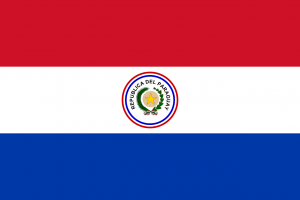Language/Paraguayan-guarani/Grammar/Plurals
Hi Paraguayan Guaraní learners! 😊
In this lesson, we will learn about plural forms in Paraguayan Guaraní.
Take some time to dive into these other pages after completing this lesson: Pronouns, How to Use "Be", How to Use Have & Give your Opinion.
Plural markers[edit | edit source]
In Paraguayan Guaraní, there are several ways to form plurals. One of the most common ways is to add the suffix -re to the singular form of the noun. For example:
| Paraguayan Guaraní | Pronunciation | English |
|---|---|---|
| mokõi | mokõi-re | chairs |
| ka'ã | ka'ã-re | dogs |
Another way to form the plural is to use the suffix -gua. This is more common for animate nouns (referring to living beings). For example:
| Paraguayan Guaraní | Pronunciation | English |
|---|---|---|
| ña'ãnga | ña'ãnga-gua | men |
| akã | akã-gua | women |
Note that there are exceptions to these rules, and some nouns have irregular plural forms.
Counting in Paraguayan Guaraní[edit | edit source]
To count in Paraguayan Guaraní, we use a base-20 counting system. The numbers from 1 to 20 are:
| Paraguayan Guaraní | Pronunciation | English |
|---|---|---|
| ñemo | 'ɲemo | one |
| mokõi | 'mokoi | two |
| mbo'ehao | 'mboʔeχao | three |
| irundy | 'iɾundɨ | four |
| yvyra | 'ɨvɨɾa | five |
| aty | 'aty | six |
| guasu | 'ɡwasu | seven |
| rovapy | ɾova'pɨ | eight |
| peteî | 'petei | nine |
| mburuvicha | 'mbuɾuvit͡ʃa | ten |
| poko'i | 'pokoʔi | eleven |
| marandu | ma'ɾandu | twelve |
| anga | 'aŋɡa | thirteen |
| mokõi mbo'ehao | 'mokoi 'mboʔeχao | fourteen |
| mokõi irundy | 'mokoi 'iɾundɨ | fifteen |
| mokõi yvyra | 'mokoi 'ɨvɨɾa | sixteen |
| mokõi aty | 'mokoi 'aty | seventeen |
| mokõi guasu | 'mokoi 'ɡwasu | eighteen |
| mokõi rovapy | 'mokoi ɾova'pɨ | nineteen |
| mokõi peteî | 'mokoi 'petei | twenty |
To count beyond twenty, we use multiples of twenty. For example, 40 is peteî mokõi, which means "two twenties and (add) four".
Dialogue[edit | edit source]
Here's a dialogue between Ana and Juan, where they talk about plurals:
- Ana: ¿Oîkuri mokõi-pe nde rehegua jepuka hapichakuéra?
- Juan: Che ko'ãga-re nde kuimba'e jepuka. Ha mborayhu-re nde ndoikuaáva rehegua jepuka.
- Ana: Oh, nde rógape oîpeteî-pe nde yvyra-gua potĩ orekóva.
- Juan: Ha oikatu-pe nde ña'ãnga-gua hese rupi.
Translation:
- Ana: How many chairs do we need to buy?
- Juan: We need to buy two chairs. And we also need to buy some tables.
- Ana: Okay, I'll buy five of them.
- Juan: And also get eight men for the party.
Fun facts[edit | edit source]
- Paraguayan Guaraní is one of the two official languages of Paraguay, along with Spanish. It is also widely spoken in neighboring countries like Argentina and Brazil. - The consonant cluster /mb/ is unique to Paraguayan Guaraní, and is often borrowed into Spanish words used in Paraguay. - Paraguayan Guaraní has a complex system of verb conjugation, which takes into account the person, number, tense, mood, and aspect of the verb.
Practice[edit | edit source]
To practice what you've learned, try translating the following sentences into Paraguayan Guaraní:
1. We bought three dogs. 2. My father has four chairs in his office. 3. They saw seven birds in the sky.
Sources[edit | edit source]
➡ If you have any questions, please ask them in the comments section below.
➡ Feel free to edit this wiki page if you think it can be improved. 😎
Other Lessons[edit | edit source]
- How to Use Have
- Pronouns
- How to Use Be
- Adjectives
- Questions
- Negation
- Give your Opinion
- Conditional Mood
- Future Tense

